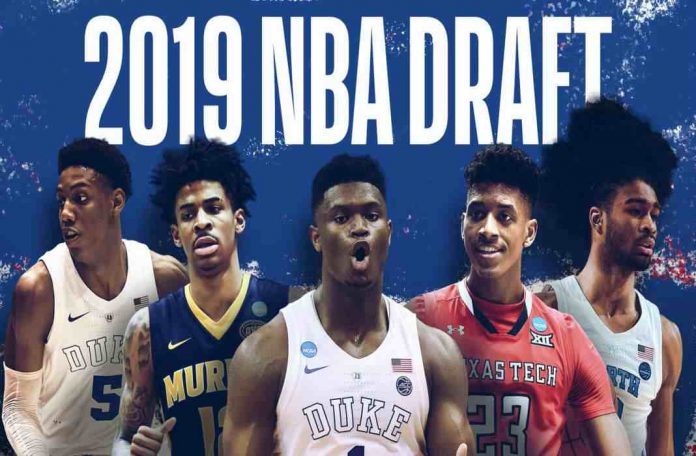This year’s NBA Draft is one of the most anticipated in recent history. With players as popular as Zion Williamson and Ja Morant, it’s understandable why that it’s receiving so much media coverage. But, outside of the top three picks, the order of the draft is extremely unpredictable. So, follow PerSources writers Mason McFee, Yaw Bonsu, and I in this mock draft.
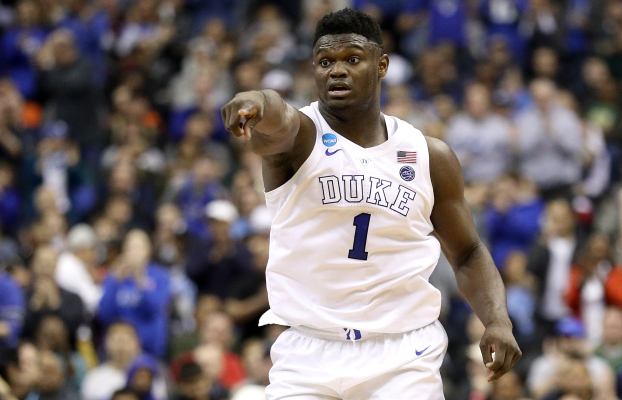
1. New Orleans Pelicans: Zion Williamson, SF/PF, Duke
This mock draft was done well before Anthony Davis was traded to the Lakers, but that still doesn’t change the thought process behind the selection. Zion is an unbelievable talent. There are some concerns about his weight and play-style curbing the length of his career (which I think have some legitimacy), but Zion is arguably the closest thing we’ve seen to LeBron in terms of play-style in a prospect in quite some time. With Lonzo Ball, Brandon Ingram, Josh Hart, and Jrue Holiday, the Pelicans will have quickly developed one of the best young cores in the league.
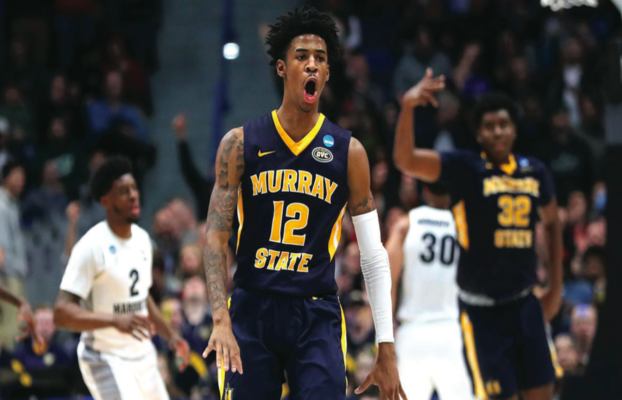
2. Memphis Grizzlies: Ja Morant, PG, Murray State
Not long after the lottery, it was announced that Memphis is reportedly already set on Ja Morant as their next franchise player. The 6’3″ guard out of Murray State has the size you need from a modern NBA PG. A strength of his is his ability in the open court. His dynamic athleticism and control on the fast break are only comparable to that of a Russell Westbrook. He can score in the paint, mid-range, and behind the arc. Outside of scoring, he’s also proven to be an elite passer, coming off of 10 assists per game for Murray State last season.
In regards to his weaknesses, Morant needs to work on his decision-making. He knows he has the ability to hit a shot but sometimes wrongfully elects not to take it. Although he’s in control in the open court, he must slow it down when he isn’t. Considering the Grizzlies have discusses trading Mike Conley, they must be all in on Morant and what he can do. He won’t be going into a situation where there’s a superstar next to him either. It’ll be his show, and it’ll be up to him to prove he can be a star at the next level.
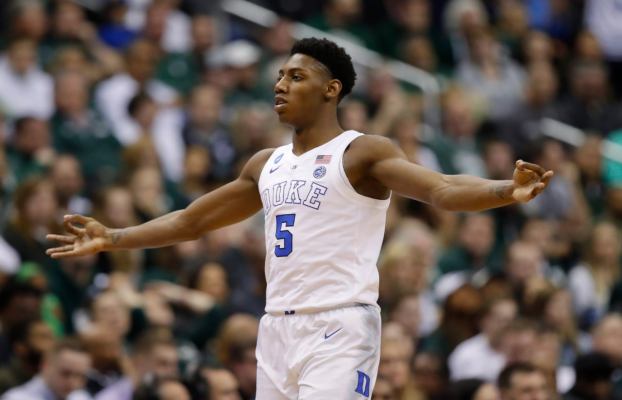
3. New York Knicks: R.J. Barrett, SG, Duke
Many believe R.J. Barrett has the most potential out of everyone in this draft. He’s a 6’7″ SG with a 6’9″ wingspan. In college, he was one of the best play-makers for Duke, averaging 4.3 APG. Though that isn’t a large number, he made some spectacular passes that only few players in college could have made. He struggled with turnovers, averaging 3.2 a game, but that was mainly due to over-dribbling.
Barrett was also one of college’s top scorers, averaging 22.6 PPG. He did struggle with consistency, shooting 45% from the field and an atrocious 30% from 3PT. If Barrett can sure up his turnover issues and become a more consistent scorer, he can easily be the best player in this draft. For NY to get a potential franchise-altering player with the third pick is an absolute steal.
4. New Orleans Pelicans (via. LAL): De’Andre Hunter, SG/SF, Virginia
I liked this pick for the Lakers when I originally made it, and I still like it for the Pelicans despite their new additions (assuming they keep the pick). Hunter admittedly has a higher floor than a higher ceiling, but that doesn’t mean he can’t be an impact player in the NBA. At Virginia, he consistently showed that he’s a stout defender and can knock down 3PTs at a consistent rate, but it wasn’t always in the same game. In this year’s national title game, he showed both.
Hunter may never develop into a 20+ PPG scorer, but he’s one of the best 3-and-D prospects in this draft and should offer lineup versatility and solid defense for a young Pelicans’ squad.
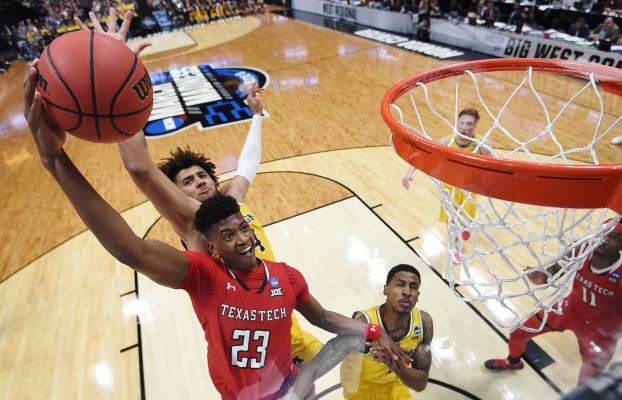
5. Cleveland Cavaliers: Jarett Culver, SG, Texas Tech
The Cavaliers need to go the route of choosing the best player available. After selecting PG Colin Sexton in last year’s draft, it’s only right to pick up someone who can take the burden off his back. Selecting Culver will form a solid young back-court that can possibly develop into something bigger in the future.
He’s an elite shooter with the ability to knock down shots from anywhere on the court. His pure stroke proved to be highly efficient for the Red Raiders last season, as he led his squad to the National Championship game. His crafty ball-handling allows him to be a high-level playmaker, especially after collapsing the defense. A less talked about the strength of his has to be his movement without the ball, which is similar to that of Stephen Curry.
At the next level, Culver must improve his free throw percentage. As a streaky guard, there’s no excuse for him not to excel from the free throw line. His jump-shot is also going to need to get quicker, as he has a slower windup with his release.
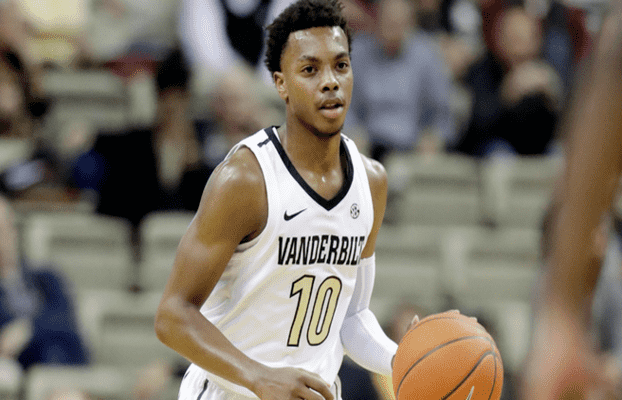
6. Phoenix Suns: Darius Garland, PG, Vanderbilt
Darius Garland is one of the more intriguing players in this draft. Prior to this college basketball season, he was projected around 10-15th overall. But, during the season, Garland suffered a season-ending injury, sidelining him for all but five games.
After the combine, Garland quickly rose back up draft boards. With Phoenix in a desperate need of a PG, Garland is the perfect high-risk, high-reward type player they need. He has the perfect combination of scoring and playmaking.
In Garland’s five games at Vanderbilt, he averaged 16.2 PPG and 2.3 APG. He shockingly shot 55% from the field and 43% from 3PT. Despite Garland’s low assist numbers, he showed flashes of great court vision and playmaking. If he can stay healthy, Phoenix will have themselves a fringe All-Star PG for many years.
7. Chicago Bulls: Cameron Reddish, SF, Duke
Cam Reddish is either the most underrated or most overrated prospect in the draft. At the beginning of the NCAA season, Reddish was widely regarded as a top-five pick in the draft. Because of the spotlight being put on Williamson and Barrett at Duke, he didn’t get the chance to show NBA front offices what he’s capable of.
Reddish is one of the most-gifted players in this draft. He’s a well-built, strong athlete with key coordination on the court. Although it may have been suppressed at Duke, Reddish is certainly effective in iso situations. His quick first step is one of his biggest strengths. He has a combo guard skill-set which will translate nicely at the next level with his slasher play-style.
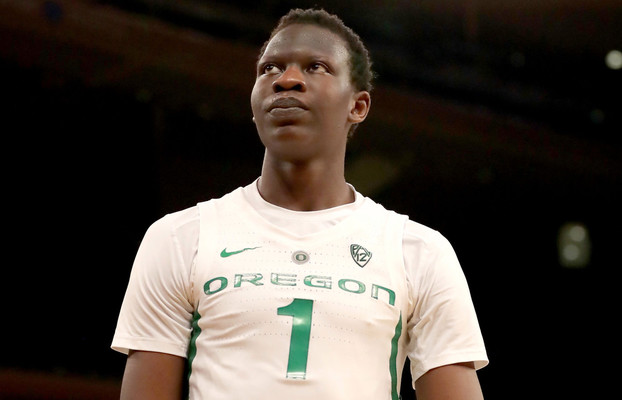
8. Atlanta Hawks: Bol Bol, C, Oregon
Boom or bust is tossed around a bit too much when discussing and evaluating prospects, but unfortunately for Bol Bol, that’s the label that fits him best after seeing limited action at Oregon before a foot injury (always concerning for any big man) ended his season prematurely. It was that limited action that has scouts salivating over the son of the NBA great. Bol Bol has it all: ball-handling, 3PT shooting, shot-blocking, rebounding, and the height. The main marks against him are the aforementioned injury and his weight.
The tools are there, it’s just a matter of if they’ll translate and if he’ll recover from the injury. Regardless, with two picks in the lottery, Atlanta should be swinging for upside in the early stages of their rebuild. If they hit on this pick, NBA defenses will have a tough time containing Trae Young, John Collins, and Bol Bol in transition.
9. Washington Wizards: Jaxson Hayes, C, Texas
With the Wizards still having John Wall and Bradley Beal, they’ll likely look to the draft to fill holes on their roster, rather than best player available. Washington currently has one center under contract for next season, and they don’t have the money to sign to a starting caliber big man this summer.
Jaxson Hayes is the best fit of the remaining centers in this year’s draft. Hayes is a long, athletic center who can block shots and finish at the rim. He averaged 2.2 blocks, which was top-10 in the country. He also shot 79% from shots within five feet, which was also top-10 in DI. Hayes will be a perfect anchor in Washington.
10. Atlanta Hawks (via. DAL): Rui Hachimura, SF/PF, Gonzaga
At this pick, the Hawks should immediately look to draft a guard to pair in the backcourt with Trae Young. However, there’s just too much frontcourt talent to pass up on. To me, this pick is a toss-up between both of Gonzaga’s big men in Rui Hachimura and Brandon Clarke. I believe that Hachimura has the upper hand on his former Gonzaga teammate and should be drafted by the Hawks.
Hachimura was a star for the Bulldogs. He has an NBA build with great strength, long arms, and great coordination. At his 6’8″, Hachimura can outrun most of the players on the court. The paint is where he shines. He’s a terrific offensive rebounder and can score well in the lane. Hachimura is a player that’ll be your outlet immediately after he snags the defensive rebound. On the other side of the ball, he has both the skills and potential to be a standout defender at the next level.
11. Minnesota Timberwolves: Sekou Doumbouya, SF, France
With the departure of Jimmy Butler, Minnesota has a desperate need for young wing players. Though they have Robert Covington and Andrew Wiggins, Sekou would add a completely new dynamic to Minnesota. He’s a 6’9″ small forward with a long 7″ wingspan. In the U18 World Cup, Sekou shut down players like R.J. Barrett and Cam Reddish. He averaged roughly 0.7 SPG in France’s lower professional leagues. He’s more of a raw prospect on the offensive end, only averaging 7.8 a game on 48% from the field and 35% from 3PT.
Despite the low statistics, Sekou showed elite defensive ability in his game tape, along with workouts leading up the NBA draft. Either Sekou turns out to be worse than Frank Ntikilita or develop into a Kawhi Leonard-like player. With such a high-risk factor, teams may be hesitant to select him, but with Minnesota unsure about Wiggins and Covington, why not take a chance on a player with one of the highest ceilings in the draft.
12. Charlotte Hornets: Bruno Fernando, PF/C, Maryland
Charlotte’s offseason revolves around whatever Kemba Walker decides. Barring them using this selection to move salary (an understandable move, but not a great one), their roster will consist of Nicolas Batum, Bismack Biyombo, Cody Zeller, MKG, and Marvin Williams next season. Regardless, the Hornets need to continue adding youth to the roster, like they did last year selecting Miles Bridges (coincidentally) at 12th overall.
Fernando offers size, shooting, and shot-blocking. Consistency is the biggest knock against his game, but with all due respect to the aforementioned players, he doesn’t face too stiff of competition for playing time. A solid comparison for him is what John Collins is developing into now.
13. Miami Heat: Nassir Little, SF, The University North Carolina
Seeing Dwyane Wade in a Lakers jersey next season Not seeing Dwyane Wade in a Heat jersey next season will be weird, but like their Southeast Division counterpart, the Heat need to add youth into an aging roster. They already have some nice pieces in Justice Winslow, Bam Adebayo, and Derrick Jones Jr., but Goran Dragic, Hassan Whiteside, James Johnson and Ryan Anderson are set to make about $82 million combined next season, making it hard to reduce their playing time. Fortunately, the Heat still have Erik Spoelstra as their head coach and Pat Riley in the organization.
UNC coach Roy Williams said that Little is the best athlete he’s ever coached, which is saying something. Athleticism doesn’t always equal production, but for one of the worst offenses in the league last season, the Heat could use some instant offense. Little can provide that in transition, beyond the arc and in the paint. His athleticism should help continue the Heat’s strong defensive showing from the past few seasons as well.
14. Boston Celtics (via SAC): Keldon Johnson, PG/SG, Kentucky
With the likely departure of Kyrie Irving and Terry Rozier, Boston is going to look at guard very early in this year’s draft. Keldon Johnson is the perfect player for them. In Johnson’s one year at Kentucky, he split his minutes at PG and SG, showing he has the versatility to play both positions. Whether you run him at the PG or SG, you’re getting the same product – a 6’6″ guard who’s an excellent ball-handler and can score at all three levels. Johnson averaged 13.6 PPG while shooting 46% from the field and a remarkable 38% from 3PT.
Even though Johnson wasn’t much of a playmaker in college, he showed flashes of playmaking ability. Johnson’s not known for his defense either, but his length and frame will allow him to quickly develop on that end. What Boston is essentially getting at 14 is a younger and taller Terry Rozier.
15. Detroit Pistons: Tyler Herro, PG, Kentucky
Tyler Herro is one of the shooters that many teams are looking for. In today’s NBA, if you can shoot, you’ll make it in the league. As far as the offseason goes, there isn’t much going on in Detroit. They can’t continue to rely on Andrew Drummond and Blake Griffin in the offense. They need help. And, to assist with that, they must draft Tyler Herro if available.
His strength is obviously his shooting with his great balance and ability to make tough shots. Herro has the ability to knock down shots off-the-dribble, and he plays with the fire you look for in a young player. In addition, Herro is drawing player comparisons to JJ Redick, which is high praise.
At Kentucky, Herro did have some problems with his defensive footwork, and that has to be something he works on if he wants his game to come full circle in the NBA. He was known to Kentucky fans as a walking bucket last year, which can translate to Detroit well. Seeing that Detroit needs all the help they can get, Herro is the right pick. He’s the right guy to get the ball out of the paint for Detroit, thus giving a breather to their two star big men.
16. Orlando Magic: Romeo Langford, SG, Indiana
For the first time in forever, the Orlando Magic aren’t selecting a frontcourt player. Taking Langford is a step in the right direction for this up-and-coming Magic team.
Without a doubt, Langford was one of the most disappointing players this NCAA season. Being a top five recruit coming out of HS, he terribly under-performed. He led Indiana to an NIT tournament bid, but after his injury, Indiana actually went on a winning streak. His selfish play really bogged down the team. However, Langford is still one of the most-talented scorers in this draft. If coach Clifford can learn how to manage Langford’s giant ego, they’ll have the steal of the draft.
17. Atlanta Hawks (via. BKN): Nickiel Alexander-Walker, PG/SG, Virginia Tech
Finally, Atlanta gets the extra guard they need to pair with Trae Young. In Alexander-Walker’s sophomore season, he carried Virginia Tech’s offense. He was the primary ball handler 73% of the time he was on the court. Understandably so, he struggled with turnovers, averaging just under 3 a game. Also, Walker didn’t average a ton of assists which is a little concerning. He averaged 4.3 APG, respectable but with his high usage rate it should be higher.
Walker was an amazing scorer at VT. He averaged 16.2 PPG last season while shooting 48% and 38% from 3PT. He shot 42% on catch-and-shoot 3PTs last season as well. Walker’s 6’5″ frame and his ability to play on and off the ball will be a perfect fit in Atlanta.
Whether they roll with Alexander-Walker at SG or as a backup PG, he’ll be a very important player for years to come. It’s also important to note that he and his cousin Shai Gilgious-Alexander (Nickiel’s first cousin) have been training together leading up to this year’s draft.
18. Indiana Pacers: Chuma Okeke, SF/PF, Auburn
When Okeke tore his ACL after Auburn blew out North Carolina, it was a bittersweet moment. Okeke was a valuable contributor for Auburn, and much to the chagrin of Charles Barkley, ruined Auburn’s chances at making a deeper run. It’d be some time before Indiana could see what Okeke could bring to the table, but he fits multiple positions of need for their squad. Indiana has multiple free agent decisions this offseason including Bojan Bogdanovic and Thaddeus Young, their forwards for the past few seasons. One or both could return, but there’s also a real chance both depart in free agency.
If that’s the case, the Pacers are going to need depth at both positions, something Okeke offers. He’s listed as 6’8” and offers the 3PT shooting and defensive grit to play both forward spots. He’s also a tenacious rebounder and plays with high energy. Whether Bogdanovic or Young re-signs in Indiana remains to be seen, but Okeke would be a safe pick with upside either way.
19. San Antonio Spurs: Brandon Clarke, SG/SF, Gonzaga
Little do all of us know, Clarke is another freak athlete in this draft. He has a freak vertical and led the NCAA in total blocks last season (117). If you’re going to talk about Zion being a human highlight reel, then you must talk about Clarke too. He just keeps going with his relentless motor.
Considering how defensive-minded Gregg Popovich is, Clarke is the right guy for him. He’s an elite shot-blocker that’s NBA ready and can take most driving guys in the paint. Weaknesses in Clarke’s game include his size because, at 6’8”, he shouldn’t have the skills of an average NBA center. Clarke will have an immediate impact in this league, and it seems all he needs to develop is a consistent mid-range shot.
20. Boston Celtics (via. LAC): Naz Reid, C, LSU
Boston looks a little less talented at the center position they have been. Naz Reid is way too good of a player to pass on. Prior to this season, Reid was touted as a top-10 talent, but at LSU, he was terribly underused. Reid was looked at to be one of their primary offensive threats. In reality, he’s best used as a roll man and, occasionally, a face-up center. With a streaky jump-shot, it’s extremely difficult for him to play on the perimeter, which is how LSU was using him.
For a 7′ he does have really good ball skills. Boston may still have Aron Baynes and Robert Williams, but Reid can easily develop into the best out of them. Being an elite rim protector with a decent mid-range jumper, elite athleticism, and good ball skills for a center, will allow Reid to become Boston’s starting center in the near future.
21. Oklahoma City Thunder: Cameron Johnson, SF, The University of North Carolina
The Thunder are in a tough spot this offseason. Last year, they were able to convince Nerlens Noel to sign a cap-friendly deal to boost their depth. After a strong season, he’s likely going to command a deal way outside of OKC’s price range. That’s because they’re nearly $40 million OVER the cap and are going to be paying around $50 million in luxury taxes if they don’t move one of their larger salaries,and it’s not going to be Russell Westbrook or Paul George.
Sorry, Dennis Schroeder. I mean Steven Adams. I mean maybe both? Unless the Thunder can convince Noel to re-sign for the minimum or feel comfortable starting Patrick Patterson at center, then Johnson could step into big minutes as a rookie and be the rim-rolling presence Westbrook is comfortable with.
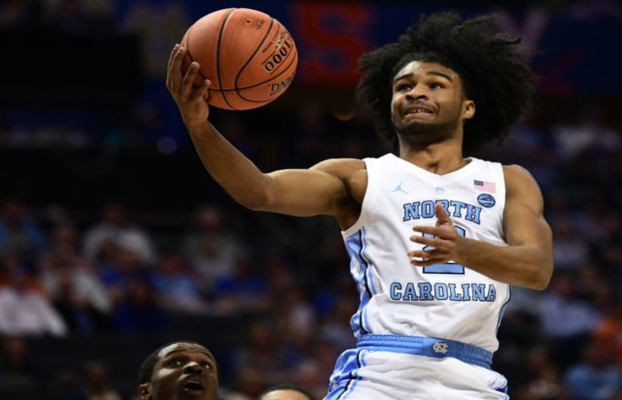
22. Boston Celtics: Coby White, PG, The University of North Carolina
I have no idea how White fell this far, but I couldn’t wait until I picked again to 26 to see if he’d continue to fall. White may not be the best PG prospect in the draft (in my opinion, that honor belongs to Ja Morant), but he does offer tremendous upside.
During his lone season at UNC, White showed his ability to play with the ball in his hands and off-ball. Known as a dynamic scorer heading into college, he also showcased his blazing speed and flashes of being a setup man in transition and in offensive sets. Once White scores a few buckets he can get tunnel vision, but under the tutelage of Brad Stevens, White could end up being a solid backup (or even starter) for Boston with Terry Rozier and Kyrie Irving’s pending free agency.
23. Utah Jazz: Mfiondu Kabengele, PF, Florida State University
The best shooting big man in this year’s draft has to be Mfiondu Kabengele. He can knock down shots from both mid-range and 3PT. Kabengele shot an impressive 37% from 3PT. At 6’10” he has the frame that can intimidate opposing defenses. He can guard most bigs and is much faster than he looks.
Weaknesses for Kabengele include his ability to score in the post. Above all, his decision-making needs the most work. At Florida State, he had a lot of trouble deciding if he should attack the basket or settle for a contested jumper. Ball-handling and passing ability are areas of concern, but with a team like the Jazz, they can wait for those parts of Kabengele’s game to develop.
24. Philadelphia 76ers: Kevin Porter Jr., SG/PG, University of Southern California
With the pending free agency of JJ Redick and Jimmy Butler, Philadelphia is going to need to select a SG. Enter USC’s Kevin Porter Jr. Porter is easily one of the most athletic players in this draft. He has a staggering 42″ vertical. He can play both PG and SG which will give Ben Simmons another option to take the ball out of his hands.
Porter is also a serviceable shooter from 3PT, where he shot 42%. He only started four games and missed 11 games due to injury. He may not be the most NBA-ready player available for Philly, but his combination of shooting and athleticism will allow him to make an immediate impact on a depleted 76ers’ roster.
25. Portland Trail Blazers: Talen Horton-Tucker, PG/SG, Iowa State
At this point in the draft, you may see some future draft steals. Talen Horton-Tucker is one of those. He’s a versatile player who can be a critical playmaker for Portland who have many great scorers. Horton-Tucker has an amazing first step and will never step away from contact. He does a great job of making his defender bite.
At Iowa State, his step-back was silky smooth and his go-to move. If Portland can give him time to develop, he can be a crafty player for them. His weaknesses include trying to force the ball into the hoop even when he’s having a bad day. To add onto that, 63% from the free throw line will not cut it in this league. He has elite scoring potential and can defend, but it’s his dribbling and rebounding ability that can make or break him in this league.
26. Cleveland Cavaliers (via. HOU): Ty Jerome, PG/SG, Virginia
The Cavaliers are set to have former lottery selection Brandon Knight, last year’s lottery selection Collin Sexton, former second-round pick Jordan Clarkson, and fan favorite Matthew Dellavedova. After next season, only Sexton is under contract. The Cavaliers may re-sign one or two of those players, but they need to embrace the youth movement. Jerome has a high basketball IQ and offers versatility at PG and SG on both sides of the ball. A career 39.2% shooter from distance at Virginia, Jerome’s game should be a seamless transition to the NBA.
27. Brooklyn Nets (via. DEN): Kris Wilkes, SG, The University of California Los Angeles
With Brooklyn being the favorites to sign All-Star PG Kyrie Irving, many may question why the Nets would draft another guard to their roster. Well, at this late in the first round it’s smarter to draft best player available, rather than draft for team need. Enter Kris Wilkes.
He’s easily one of the most polarizing players in the draft. Wilkes is a 6’8″ combo guard that’s an elite scorer and defender. In his sophomore year at UCLA, he averaged 17.1 PPG, which led the team. He also hasn’t missed a single game his entire NCAA career.
Wilkes has great ball skills and seems to be able to finish at will near the basket. With the expected departure of D’Angelo Russell, the Nets are going to need another guard off the bench anyway. Wilkes will be able to provide production off the bench for a surging young Nets’ team.
28. Golden State Warriors: Charles Bassey, C, Western Kentucky
The Warriors are going to need all the help they can get next season. With Kevin Durant missing the entire season, and Klay Thompson missing most of the season, Golden State needs to go the route of selecting the best player available.
Bassey is more of a defensive player than anything. He has a big body and frame which allow him to have a huge impact on the game. With his elite shot-blocking ability that he showed in college, he can only get better. He’s the type of player that you want to be active in the offense. What I mean by that is that Bassey is an excellent screener and can definitely help get shooters open.
His weakness will be his perimeter defense. He simply lacks skill in that spot. If Bassey wants to have a long and fulfilling career, he’ll need to improve that as soon as possible.
29. San Antonio Spurs (via. TOR): P.J. Washington, SF/PF, Kentucky
P.J. Washington is one of the oddest draft prospects this year. He’s a 6’7″ forward who can play both SF and PF. Despite Washington being the best player on Kentucky this season, he’s easily the least attractive in the draft. Being an averagely athletic SF, he’ll likely struggle to stay in front of anyone at SF, and his height is small for PF.
However, Washington can score at all three levels and play-make really well for a wing player. He’s also an excellent rebounder. The Spurs are the perfect fit for Washington. They desperately need young wings, and their the best at getting the most from their young players.
30. Milwaukee Bucks: Grant Williams, SF/PF, Tennessee
The SEC player of the year is someone with a strong offensive game. Williams is a physical player that can position himself well to get the ball in the post. He can score on his defender in multiple ways and can take pressure off Giannis Antetokounmpo.
Williams has shown he can score in the post or hitting a fadeaway jumper. At Tennessee, the 6’7″ forward showed a great ability to get to the free throw line. On defense, he’s big but gets back rather fast for his size. On the flipside, his on-ball defense, ball-handling, and size are all things that are a concern at the next level. In today’s NBA, most players have a jump-shot or are developing one. Williams needs to join the trend if he hopes to have success.
Who should’ve gone higher or lower? Let us know!
Aiden Hawkins:
Instagram: @a.hawk_persources
Twitter: @hawk_persources
Twitter: @_Mason_Jar
Instagram: @yaw_persources
Twitter: @yawbonsusports

